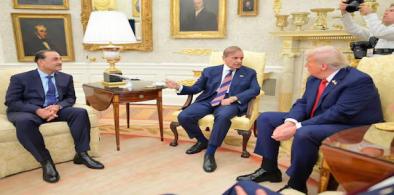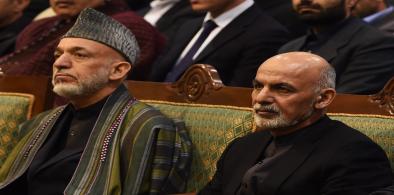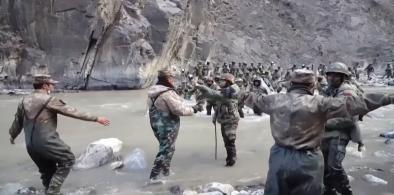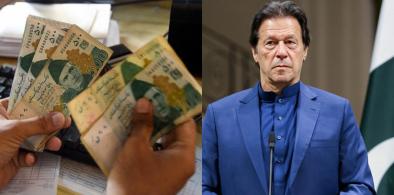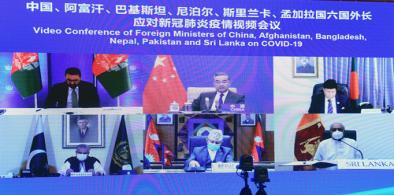If GCC countries other than UAE -- like Saudi Arabia and Oman -- can emerge as important cricketing venues, their soft power appeal is likely to further get strengthened, especially vis-à-vis South Asia, writes Tridivesh Singh Maini for South Asia Monitor
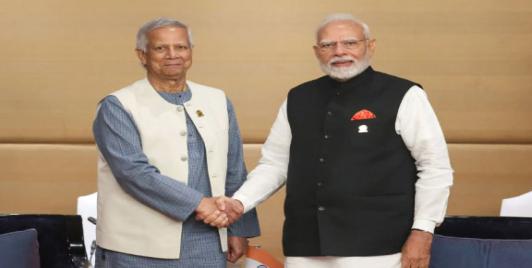
Bangladesh–India Relations at a Crossroads: Needed Recalibration, Not Rupture
The current strains in Bangladesh–India relations should therefore be seen not as an inevitable deterioration, but as a test of diplomatic maturity. Bangladesh and India share more than geography and history; they share a responsibility to ensure that temporary political frictions do not harden into structural mistrust. In a time of regional uncertainty, neither country benefits from a relationship defined by grievance or miscommunication.
A Dangerous Power Grab in Pakistan; Unpredictable Consequences For Region
The 27th Amendment, celebrated by its proponents as a security reform, is in reality a political coup executed through constitutional means. It marks not only Munir’s personal triumph but the institutional victory of the military over all other state authorities. As history warns, empowering any unelected institution above the republic’s elected will invites instability—not strength. Pakistan may soon discover that consolidating military power does not secure the nation’s future, but instead places it at greater risk
How Foreign Digital Influencers Are Tarnishing India’s Global Image
India must now transition from conventional soft-power thinking to visibility governance—the systematic management of how the country appears, circulates, and is emotionally interpreted across global platforms. Failure to do so will leave India’s global image increasingly shaped by commercial incentives outside Indian control.
Afghanistan Should Not Get Caught In The India-Pakistan Strategic Rivalry
The strengthening of Taliban-India ties runs counter to Pakistan’s interests. The more border clashes intensify between the Taliban and Pakistan, the more secure the Kashmir region and the Line of Control (LoC) become for India. Under such conditions, Pakistan will remain preoccupied with its northwestern border, giving India a unique opportunity to consolidate its control over Kashmir and potentially weaken, drive out, or eliminate Kashmiri militant groups
Covid vaccination in India: Authorities need to reach out to vulnerable population in remote areas
The government needs to decentralize health administration by empowering local health infrastructure for a fair distribution of vaccine doses so that they penetrate hard-to-reach groups, write Abhinav Mehrotra and Dr. Biswanath Gupta for South Asia Monitor
Can Hamid Karzai emerge as consensus choice for Afghan president?
Whether the Taliban will accept Karzai, a man with considerable charisma, distinctive and much written about capes and lambskin hat, is still not clear. But he has struck a highly conciliatory note, writes Mahendra Ved for South Asia Monitor
The Covid 19 impact: Mixed economic impact on South Asian countries
While South Asia has to grapple with deep-seated inequalities and vulnerabilities, the pandemic also provides an opportunity to find a path towards a more equitable and robust recovery, writes Partha Pratim Mitra for South Asia Monitor
Lessons from tragic barge sinking off Bombay High: Glaring omissions and inadequacies
The P 305 tragedy ought to be the catalyst for radical reforms in India's offshore support sector, writes Commander Anand B Kulkarni (retd) for South Asia Monitor
Climate change: South Asia in danger of extreme events
The implications are straightforward: With rising levels of carbon dioxide in the future, there will be stronger rains with potentially destructive outcomes in the South Asian region, writes N. Chandra Mohan for South Asia Monitor
A year after Galwan clash: India's stress on military modernization, strategic partnerships to counter China
India needs to deter China through a combination of its military prowess, discerning diplomatic action, and devising ways to become economically self-reliant with investment partnerships and collaborations with like-minded nations, writes Indu Saxena for South Asia Monitor
Multiple state actors' clashing interests may throw Afghanistan's future into uncertainty
China is also keen to extend the coverage of CPEC and Belt and Road Initiative (BRI) to Afghanistan. This expansion of China’s footprint would be a matter of huge concern for both the US and India, writes Amb Ashok Sajjanhar (retd) for South Asia Monitor
South Asian nations must formulate holistic strategies to deal with remittance fall
In 2021, there could thus actually be a drop in remittances - more so after the second wave of Covid 19, and the recent travel restrictions imposed by many countries including those in the Gulf on travelers from South Asia, write Tridivesh Singh Maini and Karan Bidani for South Asia Monitor
As SAARC falters, BIMSTEC's seamless transport connectivity project a big step in regional economic integration
BIMSTEC gained importance and traction after progress in SAARC (South Asian Association for Regional Cooperation) got stalled following heightened frosty ties between India and Pakistan, writes Ranjana Narayan for South Asia Monitor
Latest on India, Pakistan – a battle over Basmati
Although India controls two-thirds of the global Basmati market, competition between the nations has grown in recent years as Pakistan increases sales to Europe, writes Mahendra Ved for South Asia Monitor
Beyond oil and gas: India must look to West Asia with a new vision and mission
India must augment science and technology transfer and research cooperation in space with nations like Saudi Arabia, Israel, UAE, Bahrain and Qatar, writes Aneek Chatterjee for South Asia Monitor
Growth, jobs and IMF conditionalities: Pakistan’s daunting budgetary challenges
As there are 110 million youth in the country, there is a need for generating two million jobs every year to absorb them, the finance minister said, adding that “if we do not go into growth mode, we will have a major crisis on the streets”, writes N. Chandra Mohan for South Asia Monitor
Multi-track cooperation a must to tackle non-traditional security issues in Himalayan region
Although current Sino-Indian relations are still in a state of relative tension, Beijing is encouraging Chinese companies to meet India’s procurement demands for oxygen concentrators and other anti-pandemic supplies, writes Siwei Liu for South Asia Monitor
G7 meeting: Unique opportunity for Indian PM Modi to remind the developed world of climate finance
The invitation to Narendra Modi for G7, where China is not invited, also reaffirms a stark reality that there is no alternative on the horizon to Modi’s bold and decisive role in the global play and India's strategic geopolitical position that hedges against China’s hegemony, writes Rajendra Shende for South Asia Monitor


